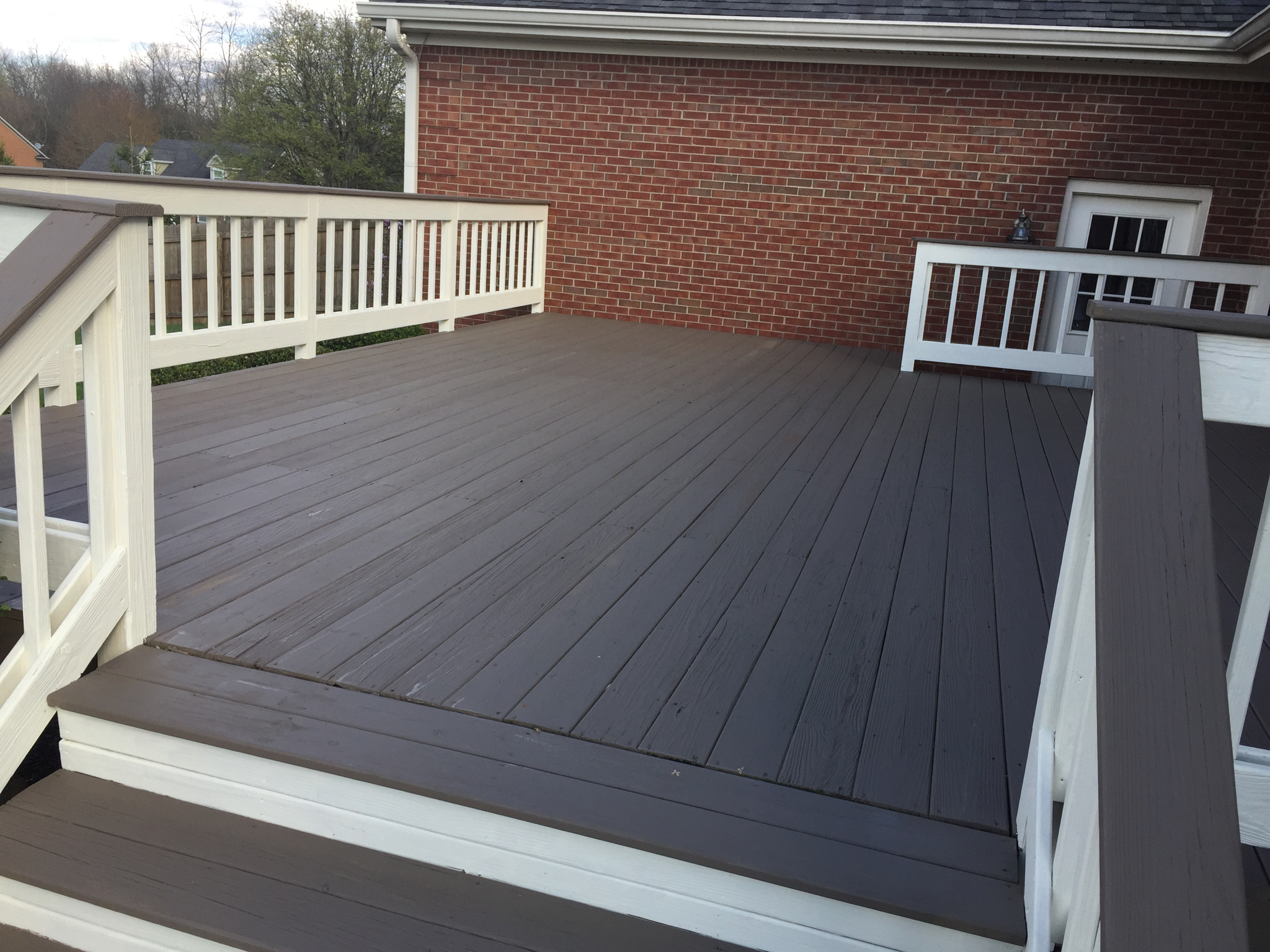Chicago Deck Staining Services: Professional Results Guaranteed
Chicago Deck Staining Services: Professional Results Guaranteed
Blog Article
A Comprehensive Overview to Various Kinds Of Deck Discoloration Techniques for Ultimate Defense and Visual Appeals
In the world of deck upkeep, the art of tarnishing stands as a pivotal step towards both preserving the honesty of your exterior area and boosting its aesthetic charm. As we navigate via the intricate globe of deck discoloration strategies, one starts to value the nuanced methods that can make all the distinction between a mediocre surface and a flawless one.
Recognizing Different Kinds of Stains
Numerous types of stains are frequently made use of in the procedure of deck staining to achieve different aesthetic and safety results. On the various other hand, semi-transparent discolorations offer a balance between color improvement and defense, permitting some timber grain to show through.
Toners include a tip of color to the wood while providing minimal protection, making them ideal for more recent decks with less wear. Understanding the characteristics and benefits of each kind of discolor is important for accomplishing the desired appearance and longevity for your deck.
Selecting the Right Spot Color
When considering the visual appeals of your deck staining task, the option of stain shade plays a critical function in enhancing the safety top qualities of the chosen stain kind (Stain Deck). The shade you select can considerably impact the total look of your deck, along with its capability to endure the elements gradually
When selecting a tarnish color, it's vital to take into consideration the existing color pattern of your home's exterior. Integrating the deck discolor with the overall aesthetic of your residential property can create a natural and visually enticing exterior space. In addition, the color of your deck tarnish can influence the temperature level of the deck surface; darker shades often tend to take in even more heat, while lighter shades mirror sunlight and remain cooler.
Moreover, the sort of timber you are staining will additionally affect just how the tarnish color appears. Different wood varieties can connect with the stain in various ways, potentially modifying the final color. It's a good idea to test the discolor on a little, low-profile area of the deck to guarantee the shade ends up as desired before proceeding with the whole task.
Preparing Your Deck for Discoloration
To guarantee a successful and lasting deck staining project, thorough prep work of the deck surface area is crucial. Begin by cleansing the deck extensively to eliminate dirt, grime, mildew, and any kind of old tarnish or complete.
Inspect the deck for any harmed or rotten boards that need to be replaced. Hammer down any kind of sticking out nails and sand any type of rough locations to make certain a smooth surface area for staining. Check for any kind of loosened railings or steps that might need tightening or repair.
Once the deck is tidy, dry, and in excellent repair work, take into consideration applying a timber brightener to bring back the deck's natural shade and open up the timber pores for much better tarnish penetration. Protect any kind of close-by plants, furnishings, or surfaces with plastic sheet prior to proceeding with the staining procedure. Proper preparation is vital to achieving a professional-looking surface and making the most of the long life of your deck stain.
Applying Spot With Numerous Techniques
For a professional and flawless surface, the approach of using stain plays a critical role in enhancing the appearance and longevity of your deck. There are several methods you can use to make certain an effective application of stain.
It is ideal for intricate areas and getting to in between deck boards. Back-brushing after rolling is advised to also out the discolor and work it into the wood for far better infiltration.
Spraying is an additional prominent technique, using speed and simplicity of application, particularly for large deck locations. Whichever technique you pick, making sure proper prep work and adhering to manufacturer standards will assist achieve a beautiful and resilient discolor coating on your deck.

Maintaining and Re-staining Your Deck
Proper upkeep and prompt re-staining are best site necessary for protecting the charm and longevity of your deck. Normal upkeep tasks consist of sweeping debris, cleaning with a deck cleaner, and inspecting for any kind of indications of wear or damage. Addressing concerns immediately can avoid much more significant troubles in the future. When it pertains to re-staining your deck, the frequency relies on different factors such as the kind of discolor used, the environment in your area, and just how much deterioration your deck experiences. Generally, it is advised to re-stain your deck every 2-4 years to see post preserve its defense and appearances.
Before re-staining, make sure the deck is tidy, completely dry, and cost-free of any type of previous discolor deposit. Pick a high-quality stain that suits your deck's material and offers the preferred level of defense.
Verdict
In verdict, understanding the various sorts of deck discolorations, selecting the best color, effectively preparing the deck, using discolor with different methods, and maintaining and re-staining the deck are essential steps for best protection and aesthetic appeals. By adhering to these actions, you can make sure that your deck remains in leading condition for many years to find.
Furthermore, the shade of your deck discolor can influence the temperature of the deck surface area; darker shades tend to soak up even more warmth, while lighter colors discover this reflect sunshine and remain cooler.
It's a good idea to evaluate the stain on a tiny, low-profile area of the deck to ensure the shade turns out as desired prior to proceeding with the entire task.

Report this page